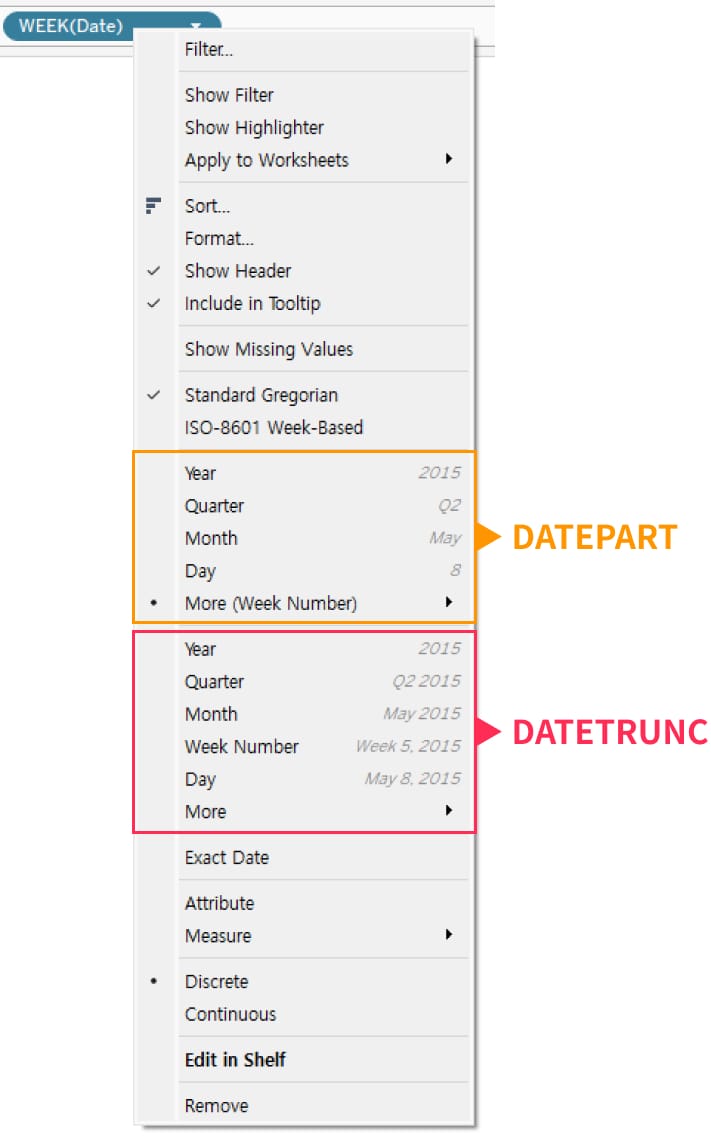Difference Between Standard Gregorian and ISO-8601
This section explains the differences between the Standard Gregorian and the ISO-8601 Week-Based in date calculations.

ISO-8601 is an international standard for representing dates and times, designed to avoid confusion when exchanging data between countries with different conventions.
Here are the key differences between the Standard Gregorian and the ISO-8601 Week-Based:
Key Differences
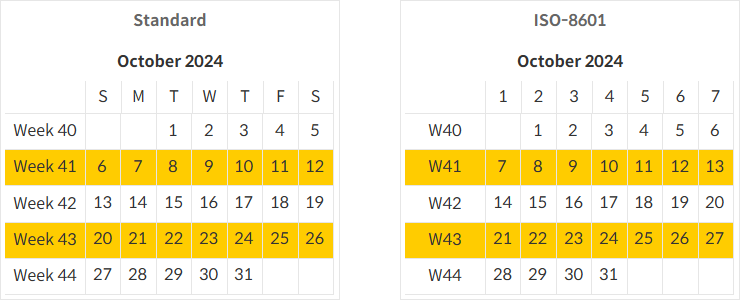
- The Standard Gregorian defines the week as starting on Sunday and ending on Saturday, while ISO-8601 defines the week as running from Monday to Sunday.
- ISO-8601 does not use day names like "Sunday"; instead, Monday is represented as 1, Tuesday as 2, and Sunday as 7.
- ISO-8601 uses the format "W" followed by a two-digit number to represent the week (e.g., "W01" for the first week of the year).
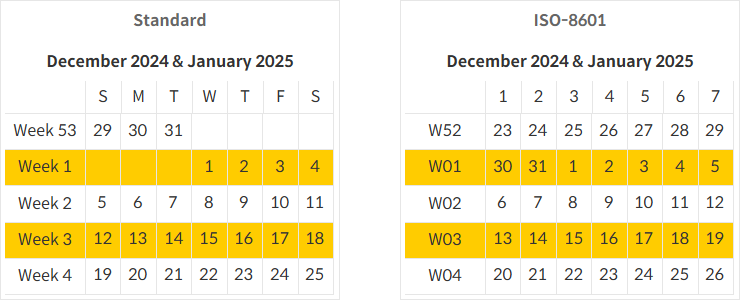
- In the Standard Gregorian, week numbers are reset based on January 1st, so Week 53 of 2024 might only have 3 days, and Week 1 of 2025 might have just 4 days.
- In ISO-8601, the first week of the year is the week that contains the first Thursday. For instance, in 2025, Week 1 starts on the week containing January 2nd. This means that December 30th and 31st, 2024 are part of ISO Week 1 of 2025.
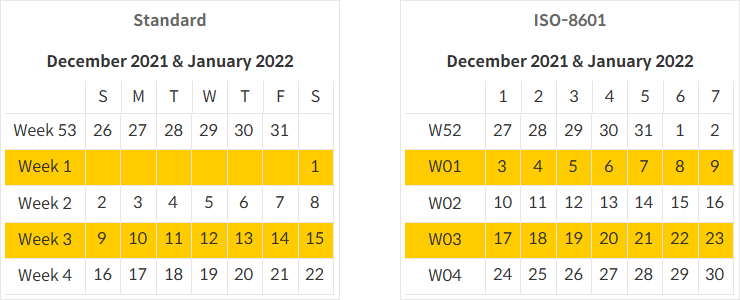
- In the Standard Gregorian, Week 1 of 2022 includes only January 1st. Under ISO-8601, however, Week 1 of 2022 starts on the week containing Thursday, January 6th, meaning January 1st and 2nd, 2022 belong to ISO Week 52 of 2021.
Additional Resources
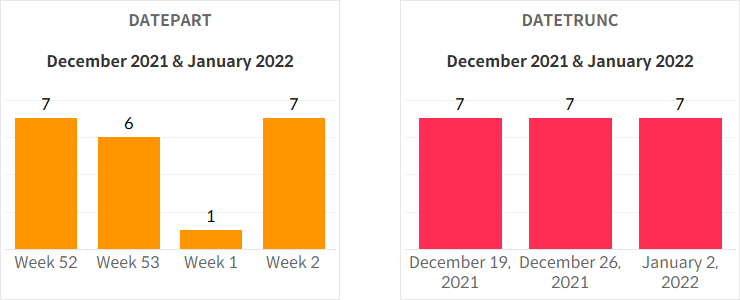
When using the Standard Gregorian to calculate week numbers, discrepancies can occur, especially for weeks at the beginning and end of the year where the number of days may differ. Be sure to pay special attention to these weeks.
Additionally, using functions like DATEPART or DATERUNC can result in different date inclusions, so it’s important to verify the output in your visualizations to ensure accuracy.
